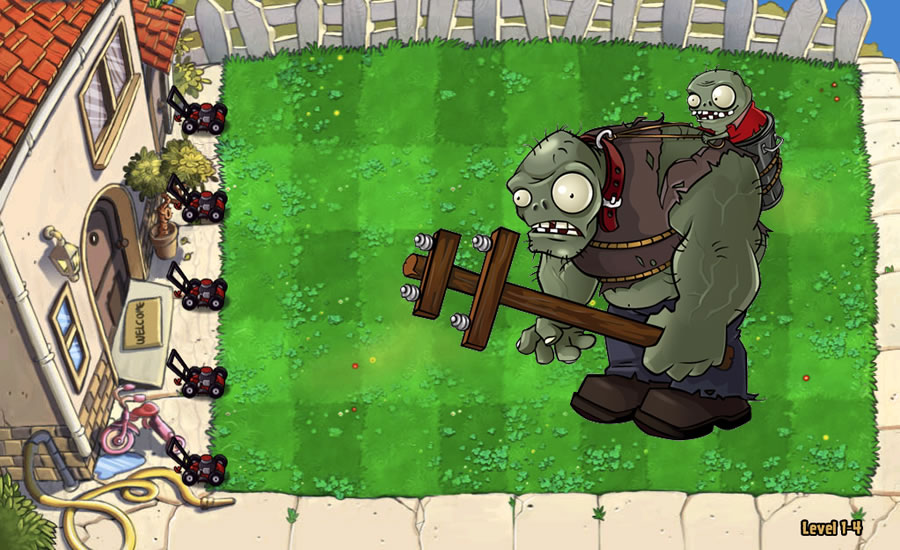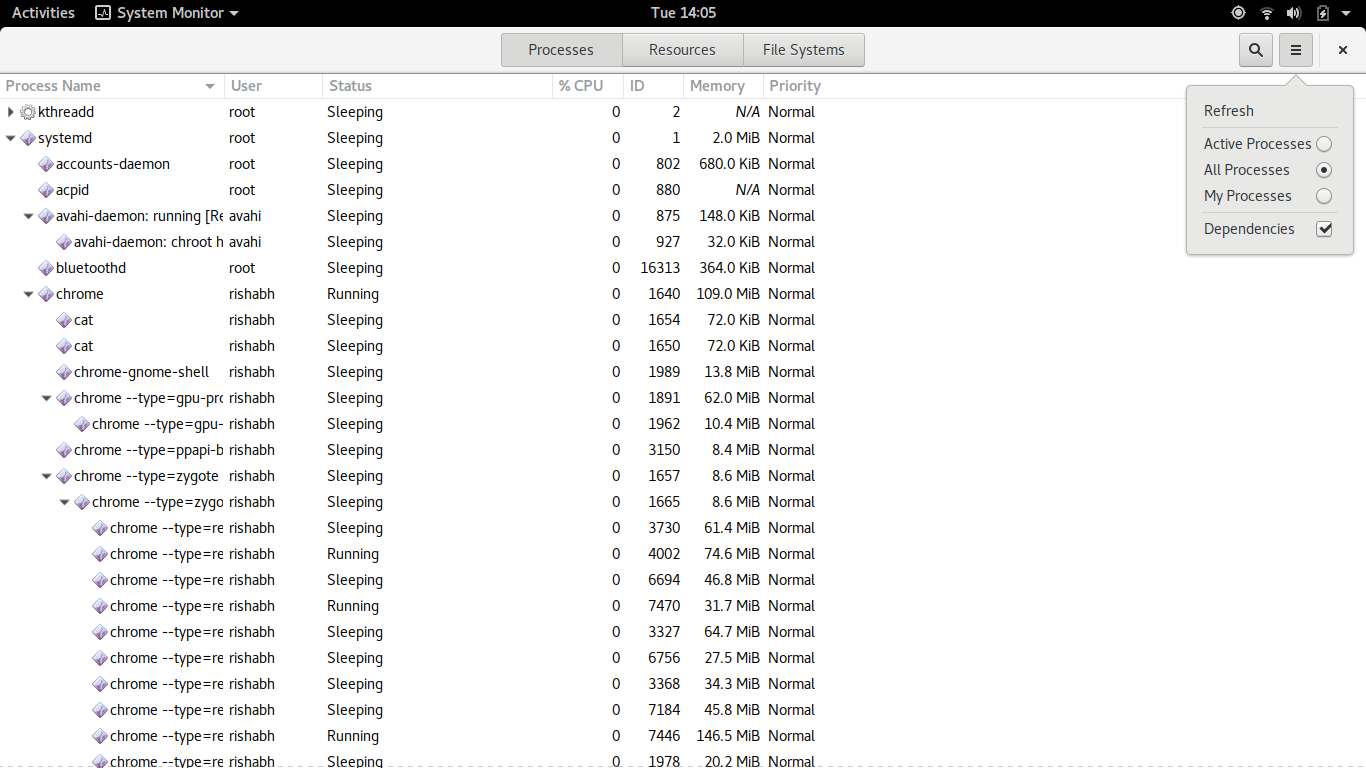How to deal with zombie processes?

We all know how processes work. We start a program, start our task, and then when the task is completed, we stop the process. When a process stops, it is removed from the process table.
You can view the current process through System-Monitor.
However, sometimes some programs still remain in the process table even after they are executed.
So, these processes that have completed their life cycle but still remain in the process table are called "zombie processes".

How are they produced?
When you run a program, it creates a parent process and many child processes. All these child processes consume the memory and CPU resources allocated to them by the kernel.
After these child processes complete execution, they will send an Exit signal and then die. This Exit signal needs to be read by the parent process. The parent process needs to subsequently call the wait command to read the exit status of the child process and remove the child process from the process table.
If the parent process correctly reads the Exit signal of the child process, the child process will be deleted from the process table.
But if the parent process fails to read the Exit signal of the child process, although the child process has completed execution and is in a dead state, it will not be deleted from the process table.
Won't. Since zombie processes do not do anything, do not use any resources and do not affect other processes, there is no harm in the existence of zombie processes. However, because the exit status and other process information in the process table are also stored in memory, the presence of too many zombie processes can sometimes be a problem.
You can imagine it like this:
"You are the owner of a construction company. You pay workers every day based on their workload. There is a worker who comes to the construction site every day and just sits there. You don't have to pay him, and he doesn't do any work. He Just come every day and sit there, that’s all!”
This worker is a living example of a zombie process. But, if you have a lot of zombie workers, your construction site will be very congested, making it difficult for normal workers to work.
Open the terminal and enter the following command:
ps aux | grep Z
The details of all zombie processes in the process table will be listed.
Under normal circumstances we can use SIGKILL
signal to kill the process, but the zombie process is already dead, and you cannot kill something that is already dead. So the command you need to enter should be
kill -s SIGCHLD pid
Replace the pid here with the process id of the parent process, so that the parent process will delete all completed and dead child processes.
You can think of it as:
"You find a body in the middle of the road, so you contact the family of the deceased, who will then take the body away from the road."
However, many programs are not so well written and cannot delete these child zombies (otherwise you will not see these zombies in the first place). Therefore the only way to ensure that child zombies are deleted is to kill their parent process.
The above is the detailed content of How to deal with zombie processes?. For more information, please follow other related articles on the PHP Chinese website!

Hot AI Tools

Undresser.AI Undress
AI-powered app for creating realistic nude photos

AI Clothes Remover
Online AI tool for removing clothes from photos.

Undress AI Tool
Undress images for free

Clothoff.io
AI clothes remover

AI Hentai Generator
Generate AI Hentai for free.

Hot Article

Hot Tools

Notepad++7.3.1
Easy-to-use and free code editor

SublimeText3 Chinese version
Chinese version, very easy to use

Zend Studio 13.0.1
Powerful PHP integrated development environment

Dreamweaver CS6
Visual web development tools

SublimeText3 Mac version
God-level code editing software (SublimeText3)

Hot Topics
 1386
1386
 52
52
 Difference between centos and ubuntu
Apr 14, 2025 pm 09:09 PM
Difference between centos and ubuntu
Apr 14, 2025 pm 09:09 PM
The key differences between CentOS and Ubuntu are: origin (CentOS originates from Red Hat, for enterprises; Ubuntu originates from Debian, for individuals), package management (CentOS uses yum, focusing on stability; Ubuntu uses apt, for high update frequency), support cycle (CentOS provides 10 years of support, Ubuntu provides 5 years of LTS support), community support (CentOS focuses on stability, Ubuntu provides a wide range of tutorials and documents), uses (CentOS is biased towards servers, Ubuntu is suitable for servers and desktops), other differences include installation simplicity (CentOS is thin)
 How to use docker desktop
Apr 15, 2025 am 11:45 AM
How to use docker desktop
Apr 15, 2025 am 11:45 AM
How to use Docker Desktop? Docker Desktop is a tool for running Docker containers on local machines. The steps to use include: 1. Install Docker Desktop; 2. Start Docker Desktop; 3. Create Docker image (using Dockerfile); 4. Build Docker image (using docker build); 5. Run Docker container (using docker run).
 How to install centos
Apr 14, 2025 pm 09:03 PM
How to install centos
Apr 14, 2025 pm 09:03 PM
CentOS installation steps: Download the ISO image and burn bootable media; boot and select the installation source; select the language and keyboard layout; configure the network; partition the hard disk; set the system clock; create the root user; select the software package; start the installation; restart and boot from the hard disk after the installation is completed.
 Centos options after stopping maintenance
Apr 14, 2025 pm 08:51 PM
Centos options after stopping maintenance
Apr 14, 2025 pm 08:51 PM
CentOS has been discontinued, alternatives include: 1. Rocky Linux (best compatibility); 2. AlmaLinux (compatible with CentOS); 3. Ubuntu Server (configuration required); 4. Red Hat Enterprise Linux (commercial version, paid license); 5. Oracle Linux (compatible with CentOS and RHEL). When migrating, considerations are: compatibility, availability, support, cost, and community support.
 How to view the docker process
Apr 15, 2025 am 11:48 AM
How to view the docker process
Apr 15, 2025 am 11:48 AM
Docker process viewing method: 1. Docker CLI command: docker ps; 2. Systemd CLI command: systemctl status docker; 3. Docker Compose CLI command: docker-compose ps; 4. Process Explorer (Windows); 5. /proc directory (Linux).
 What to do if the docker image fails
Apr 15, 2025 am 11:21 AM
What to do if the docker image fails
Apr 15, 2025 am 11:21 AM
Troubleshooting steps for failed Docker image build: Check Dockerfile syntax and dependency version. Check if the build context contains the required source code and dependencies. View the build log for error details. Use the --target option to build a hierarchical phase to identify failure points. Make sure to use the latest version of Docker engine. Build the image with --t [image-name]:debug mode to debug the problem. Check disk space and make sure it is sufficient. Disable SELinux to prevent interference with the build process. Ask community platforms for help, provide Dockerfiles and build log descriptions for more specific suggestions.
 Detailed explanation of docker principle
Apr 14, 2025 pm 11:57 PM
Detailed explanation of docker principle
Apr 14, 2025 pm 11:57 PM
Docker uses Linux kernel features to provide an efficient and isolated application running environment. Its working principle is as follows: 1. The mirror is used as a read-only template, which contains everything you need to run the application; 2. The Union File System (UnionFS) stacks multiple file systems, only storing the differences, saving space and speeding up; 3. The daemon manages the mirrors and containers, and the client uses them for interaction; 4. Namespaces and cgroups implement container isolation and resource limitations; 5. Multiple network modes support container interconnection. Only by understanding these core concepts can you better utilize Docker.
 What computer configuration is required for vscode
Apr 15, 2025 pm 09:48 PM
What computer configuration is required for vscode
Apr 15, 2025 pm 09:48 PM
VS Code system requirements: Operating system: Windows 10 and above, macOS 10.12 and above, Linux distribution processor: minimum 1.6 GHz, recommended 2.0 GHz and above memory: minimum 512 MB, recommended 4 GB and above storage space: minimum 250 MB, recommended 1 GB and above other requirements: stable network connection, Xorg/Wayland (Linux)




